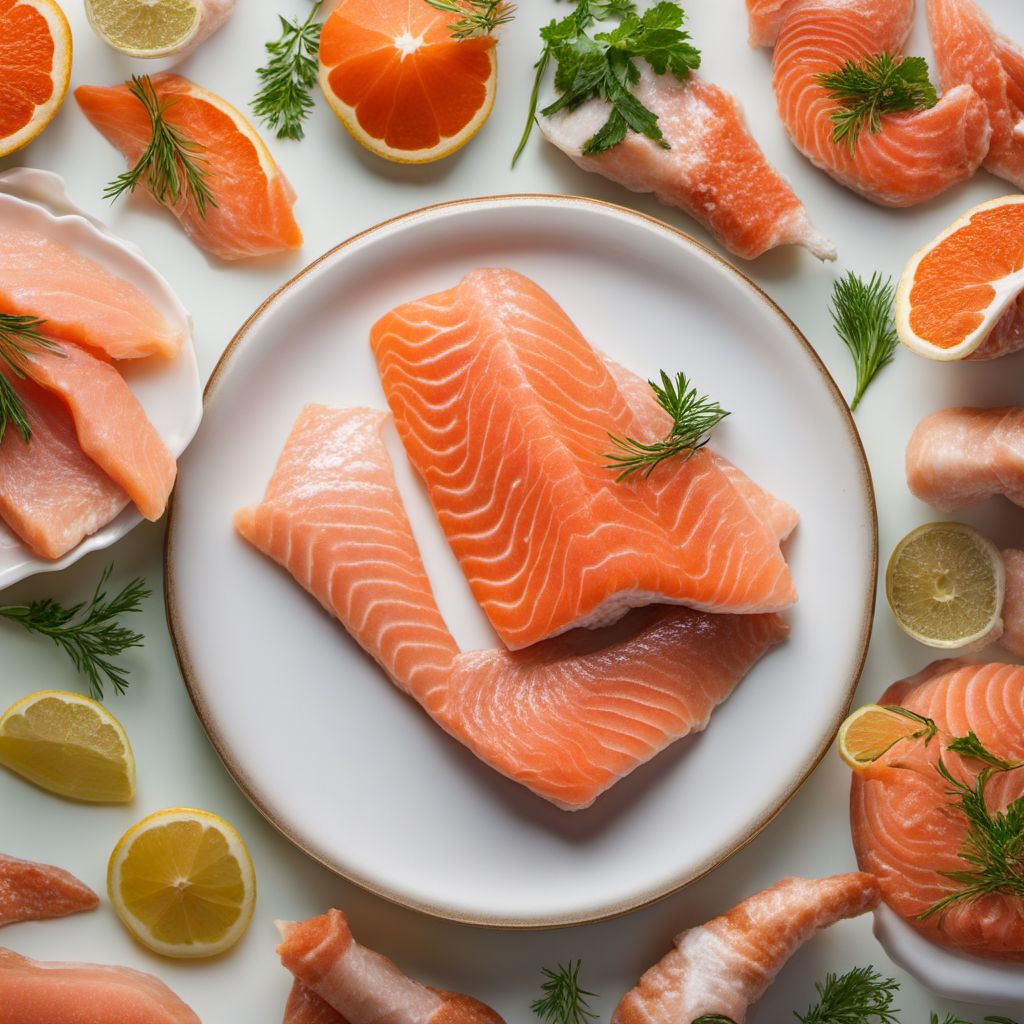
Ingredient
Salmons, trouts, smelts
The Trio of Freshwater Delights
Salmons, trouts, and smelts are prized for their firm yet tender flesh, which ranges in color from pale pink to vibrant orange. They have a mild, delicate flavor with a hint of sweetness, and their texture can vary from flaky to buttery depending on the species and cooking method. These fish are highly versatile and can be prepared in numerous ways, making them a favorite among seafood enthusiasts.
Origins and history
Salmons, trouts, and smelts have a long history of being consumed by various cultures around the world. Salmons are native to the North Atlantic and Pacific oceans, while trouts are found in freshwater lakes and rivers. Smelts, on the other hand, are small fish that inhabit both saltwater and freshwater environments. These fish have been an important food source for indigenous communities and have gained popularity in modern cuisine due to their nutritional value and culinary versatility.
Nutritional information
Salmons, trouts, and smelts are excellent sources of lean protein, omega-3 fatty acids, and essential vitamins and minerals. They are low in saturated fat and calories, making them a healthy choice for seafood lovers. However, it is important to note that the nutritional content may vary depending on the species and cooking method.
Allergens
Salmons, trouts, and smelts may contain allergens such as fish proteins, which can trigger allergic reactions in some individuals. It is advisable to exercise caution and consult with a healthcare professional if you have known fish allergies.
How to select
When selecting salmons, trouts, or smelts, look for fish that have bright, clear eyes, shiny skin, and a fresh, mild aroma. The flesh should be firm to the touch and free from any discoloration or strong odors. If purchasing whole fish, the gills should be bright red or pink, indicating freshness. Additionally, consider the source and sustainability of the fish, opting for wild-caught or responsibly farmed options.
Storage recommendations
To maintain the freshness and quality of salmons, trouts, or smelts, store them in the refrigerator at temperatures below 40°F (4°C). If purchasing whole fish, it is recommended to clean and gut them before storing. For longer-term storage, consider freezing the fish in airtight containers or freezer bags. Consume within the recommended storage period to ensure optimal taste and texture.
How to produce
Salmons, trouts, and smelts can be produced through aquaculture or wild-caught fishing methods. However, producing these fish on a small scale may require specialized equipment and knowledge of fish farming techniques. It is advisable to consult with local fisheries or aquaculture experts for guidance on producing these fish at home.
Preparation tips
Salmons, trouts, and smelts can be prepared using various cooking techniques such as grilling, baking, broiling, poaching, or pan-searing. They can be seasoned with herbs, spices, or citrus flavors to enhance their natural taste. Additionally, smoking or curing these fish can add a unique depth of flavor. Serve them as a main course, incorporate them into salads, or use them in sandwiches or wraps for a delicious seafood experience.
Culinary uses
Salmons, trouts, and smelts are widely used in cuisines around the world, particularly in regions where freshwater fish are abundant. They are commonly featured in dishes such as grilled salmon fillets, smoked trout salads, or crispy fried smelts. These fish are popular choices for sushi, sashimi, or ceviche preparations as well.
More ingredients from this category

Smelt
"Silver Delight: Exploring the Delicate Flavors of Smelt"

Ayu sweetfish
The Delicate Delight: Ayu Sweetfish Unveiled

Pond smelt
The Delicate Delight: Pond Smelt

Salmons
The Mighty Swimmer

Trouts
The Versatile Trout

Whitefishes or coregonus
"The Delicate Delights of Coregonus: Exploring the World of Whitefish"

Clearhead icefish
Delicate Arctic Gem

Char
"The Fiery Delight: Unleashing the Bold Flavors of Char"